August 11-17, 2024
The Moody Moods of Summer
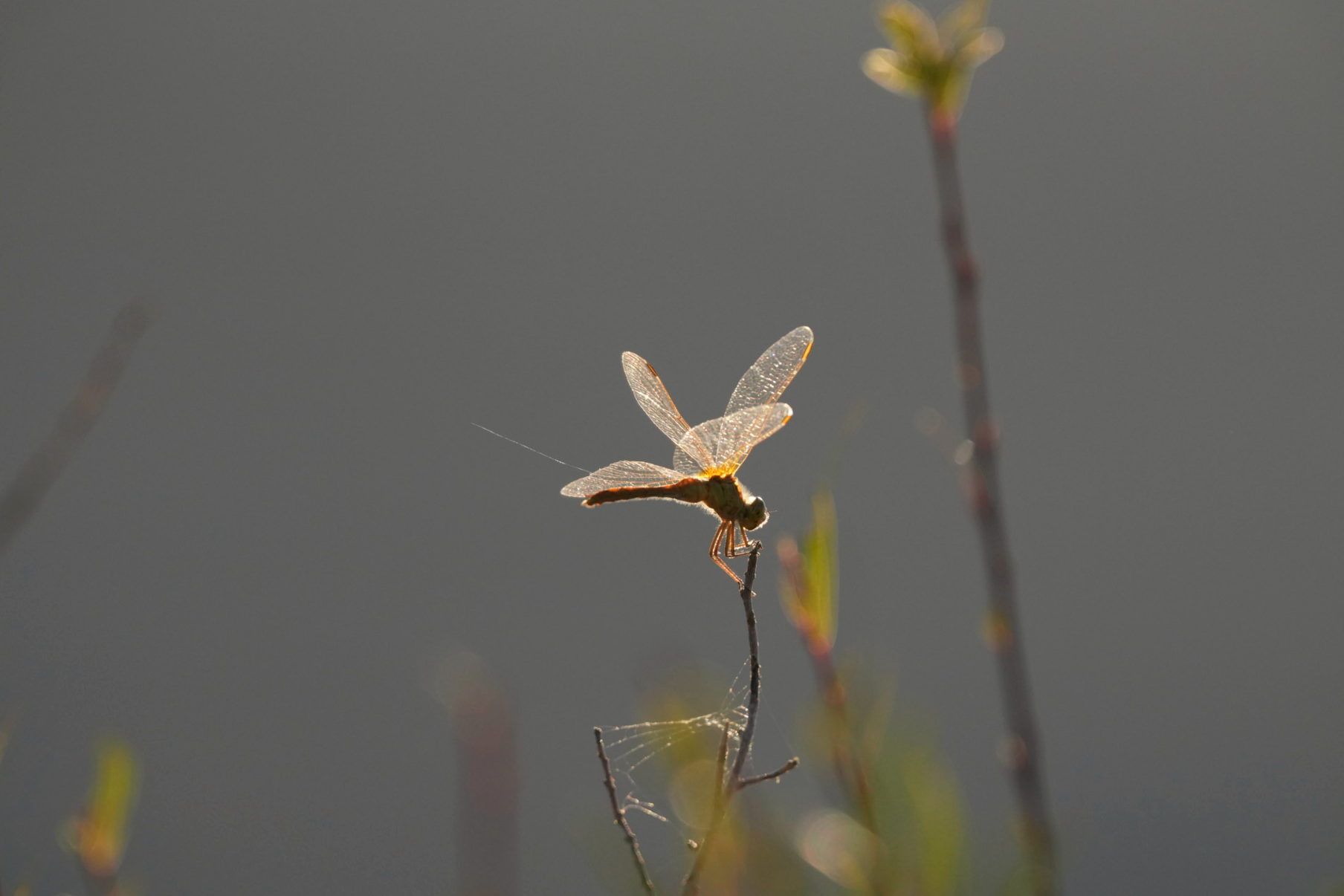
A shifting tapestry of haze, smoke, clouds, and rain made this a moody week, though all is forgiven as we close out the week with a perfect, freshly washed day of sun.
Week in Review
The highlight of the week for me has been the astonishing number of birds that seem to be active right now. This is the most activity I've seen all year, and I can only guess that it's a combination of birds gathering in flocks, birds raising noisy babies, and birds getting ready to migrate. For example, there have been groups of dozens of birds of different species hopping around the yard at the same time, there have been noisy chickadees and waxwings moving through the trees, and a family of western kingbirds with three loudly begging juveniles has been a constant backdrop.
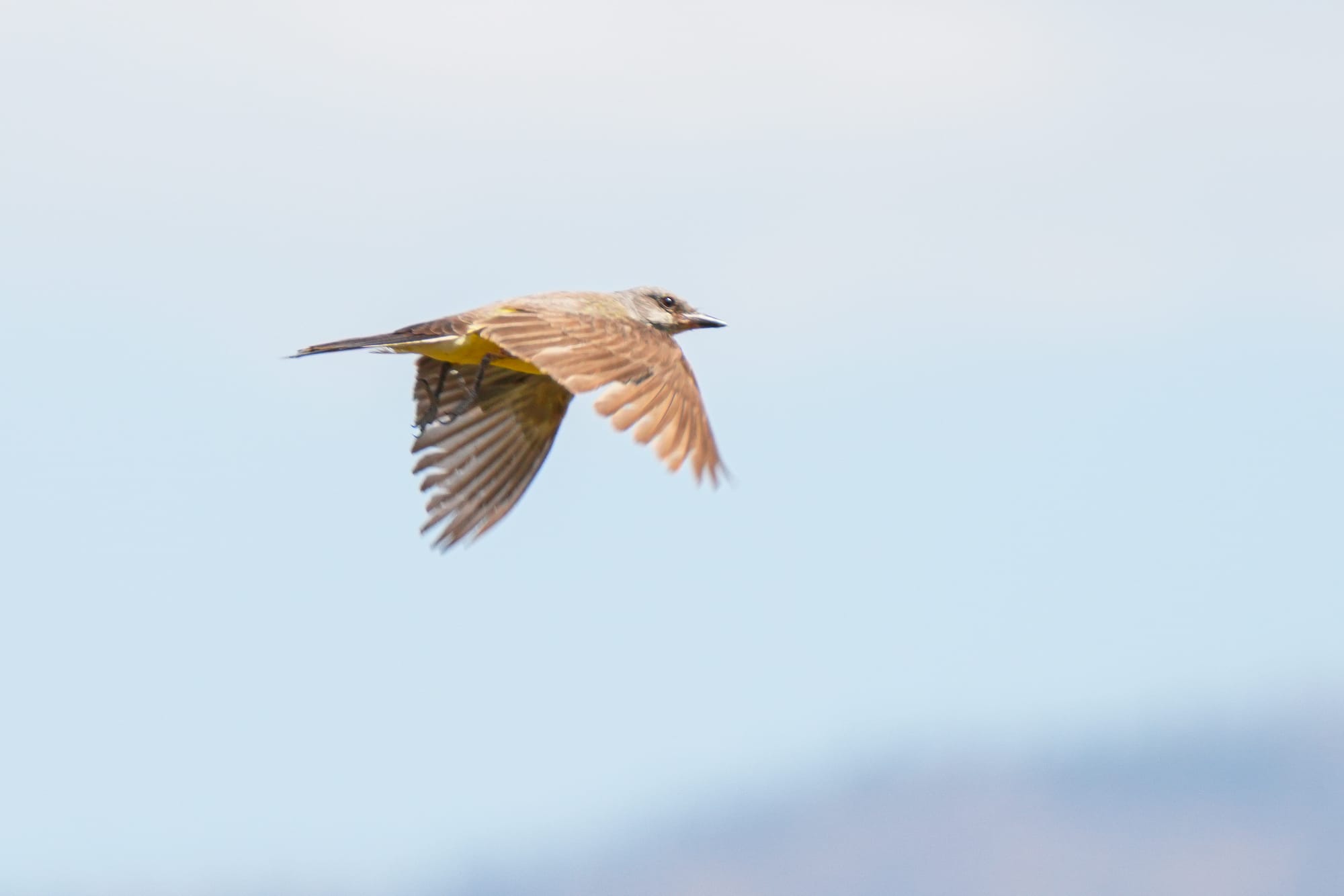
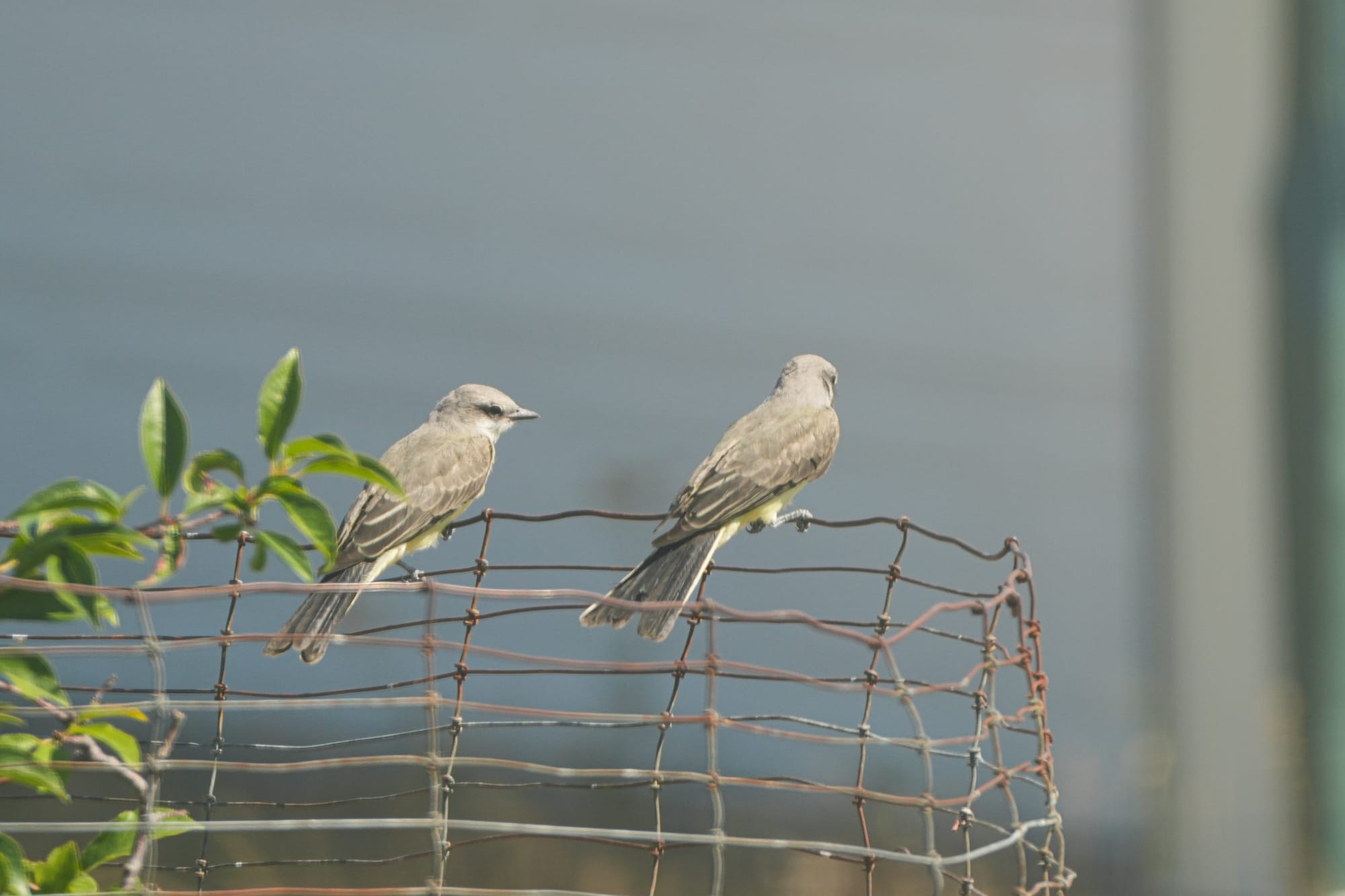
A worn-out and harried western kingbird parent flying around looking for insects to feed its incessantly begging babies. Photos by David Lukas
Other active babies include newly hatched snakes and lizards. These babies only have a month or two to eat and grow before winter sets in so it's likely that many perish in the winter, and a recent study also found that due to climate change many are now dying even before they hatch. Only a few minutes at temperatures above 110 degrees will cook eggs buried in an underground nest, and we all know that days like this are becoming increasingly common. Let's keep our eyes open for baby snakes and lizards and wish them the best!
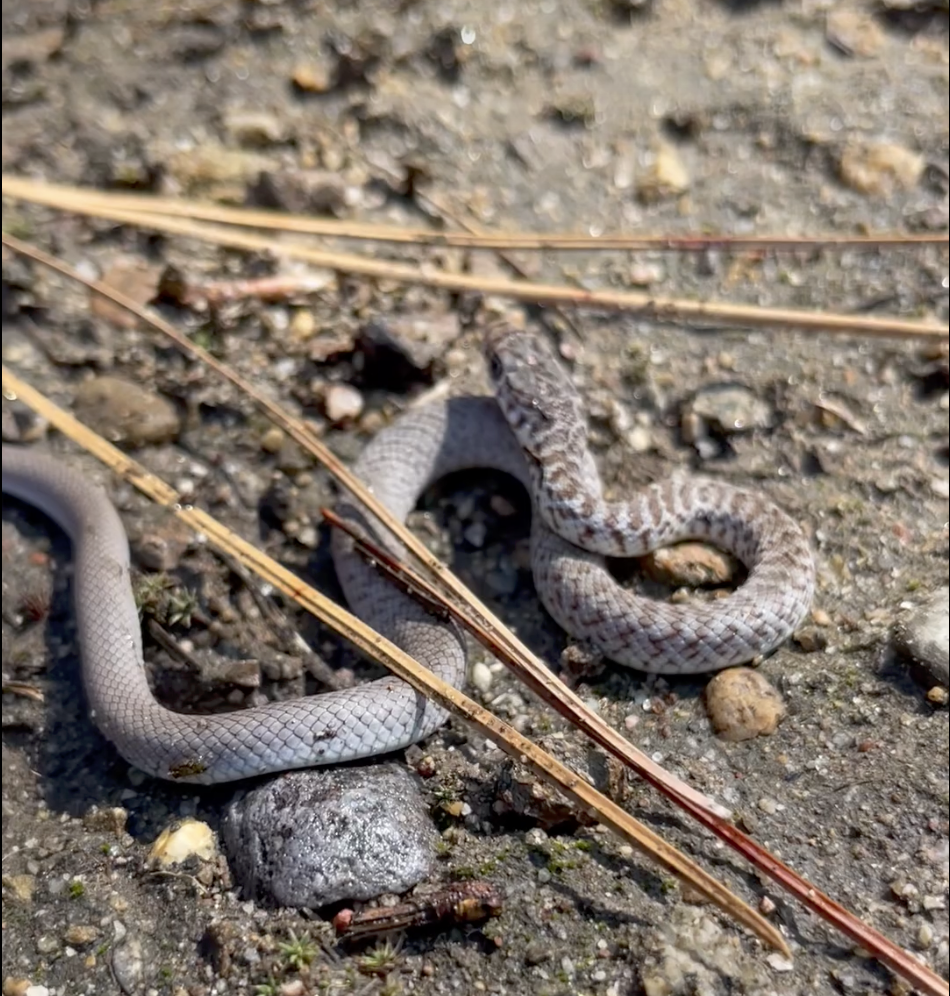
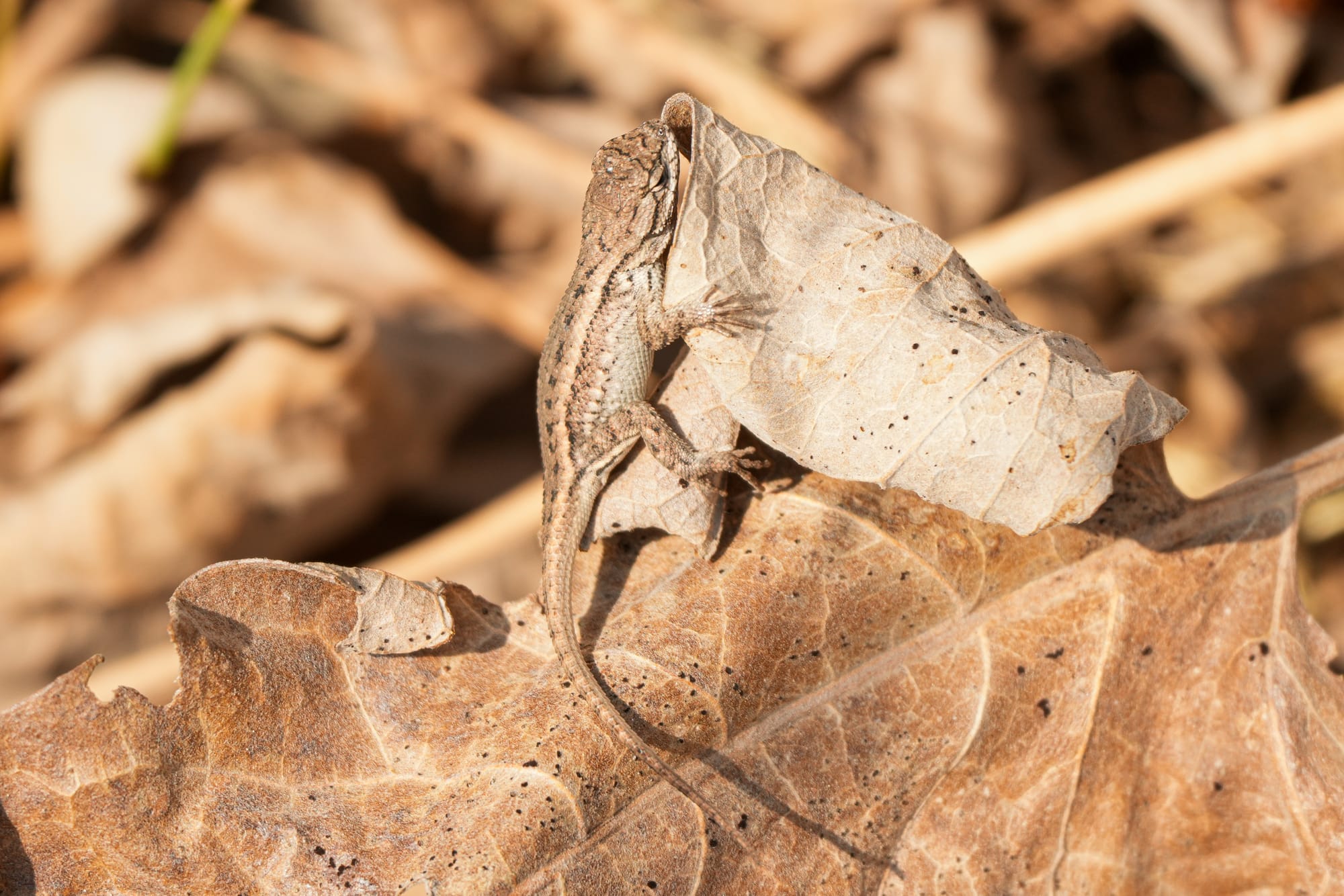
And speaking of babies, it's been fun to watch this year's fawns start to grow up. A month ago, they still had the spots they were born with, but the spots are now mostly faded, and the babies are gaining confidence. Like baby reptiles, and many other animals, their idyllic summers are all-too short so it's imperative they grow as fast as they can before the seasons change.
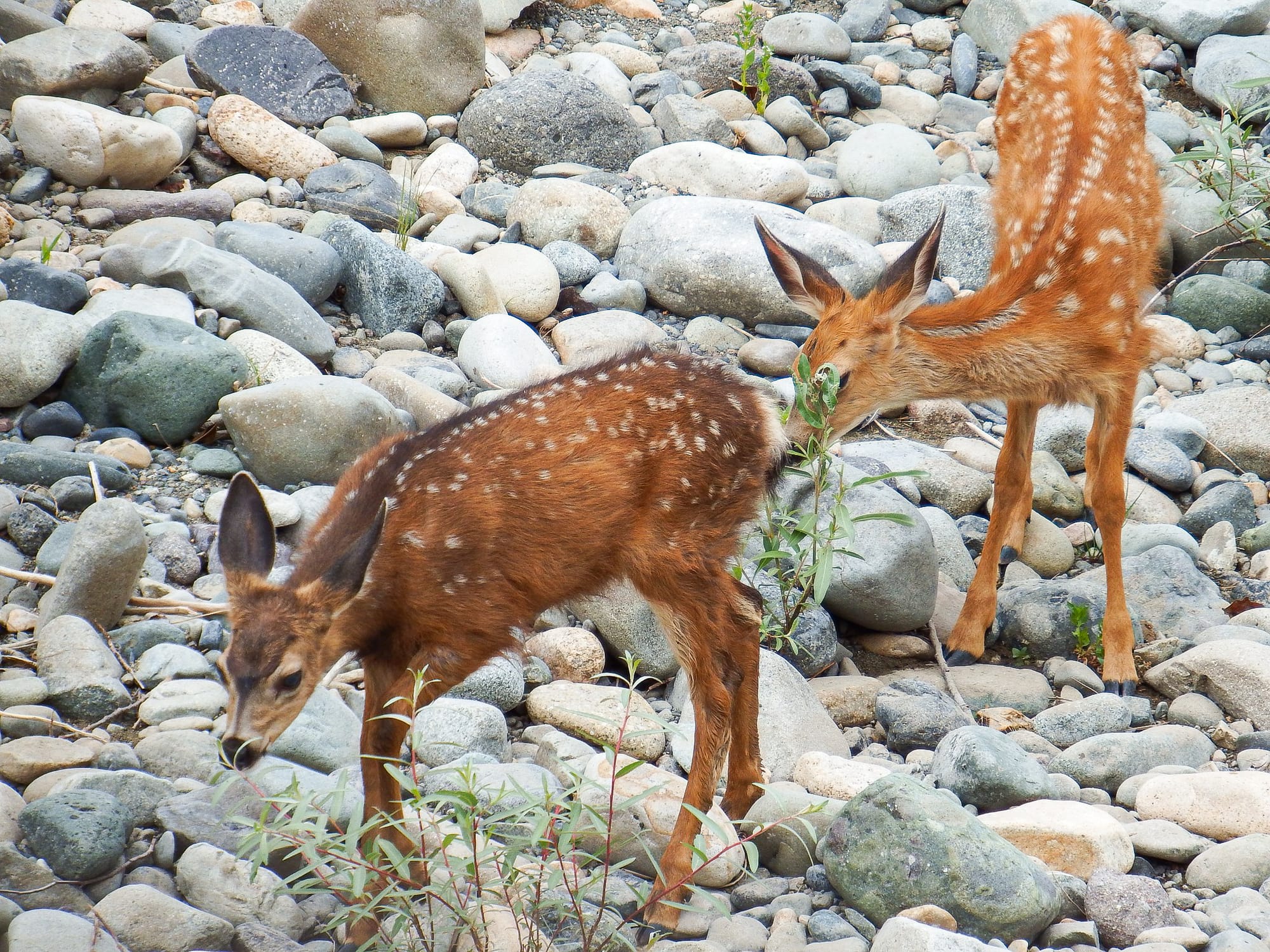
Finally, this is a fantastic time for pollinating insects. I'll talk about this a bit more below, and I also discussed this idea in an issue of the newsletter last September. While photographing flowers for this week's newsletter I was amazed how many insects are active right now, and that doesn't even count the snow buckwheats that are just starting to bloom (though the buckwheat display seems to be far more muted than last year's display, which I profiled in this issue of the newsletter).
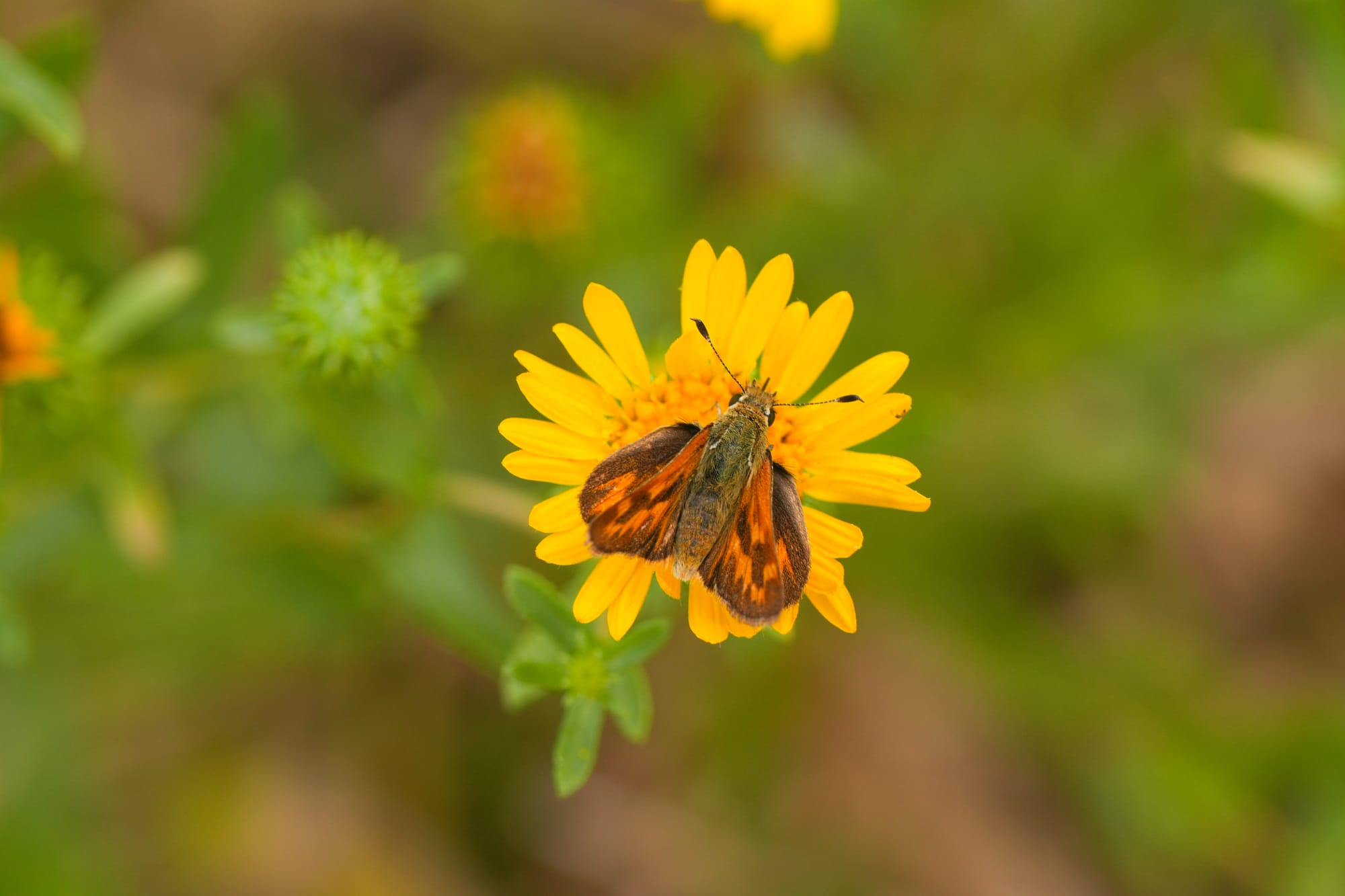
Other interesting insects this week have included adult antlions (which look like large, gangly damselflies) gathering at lights at night, and a report of a wing from a very similar giant lacewing.
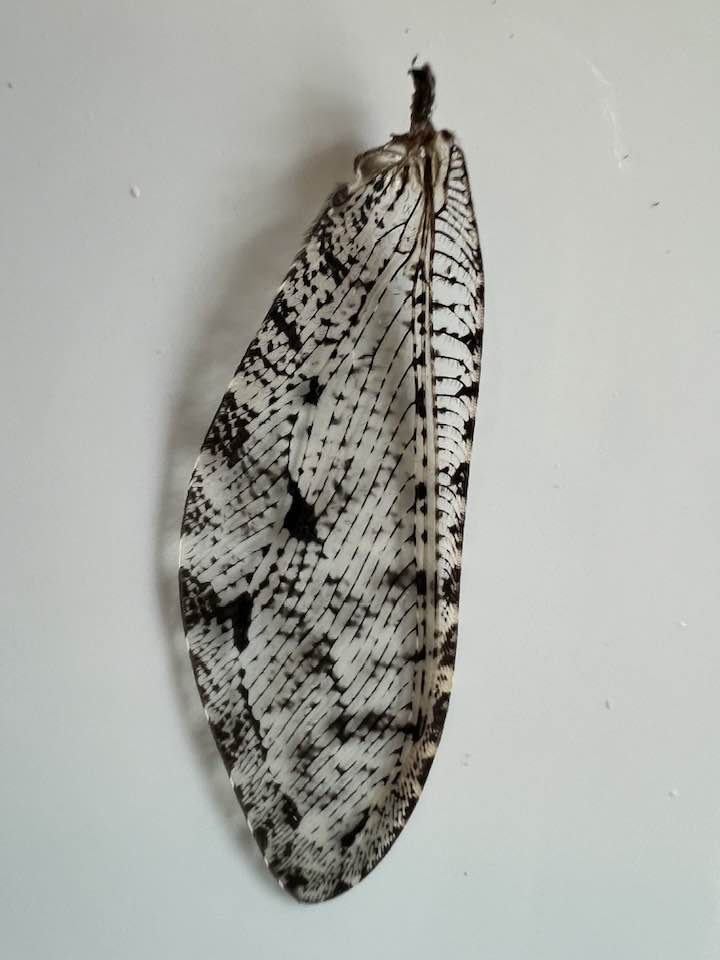
I was also startled to discover the massive caterpillar of a silk moth (Antheraea polyphemus) being attacked and devoured by yellowjackets—it's that time of year when yellowjackets are out in force!
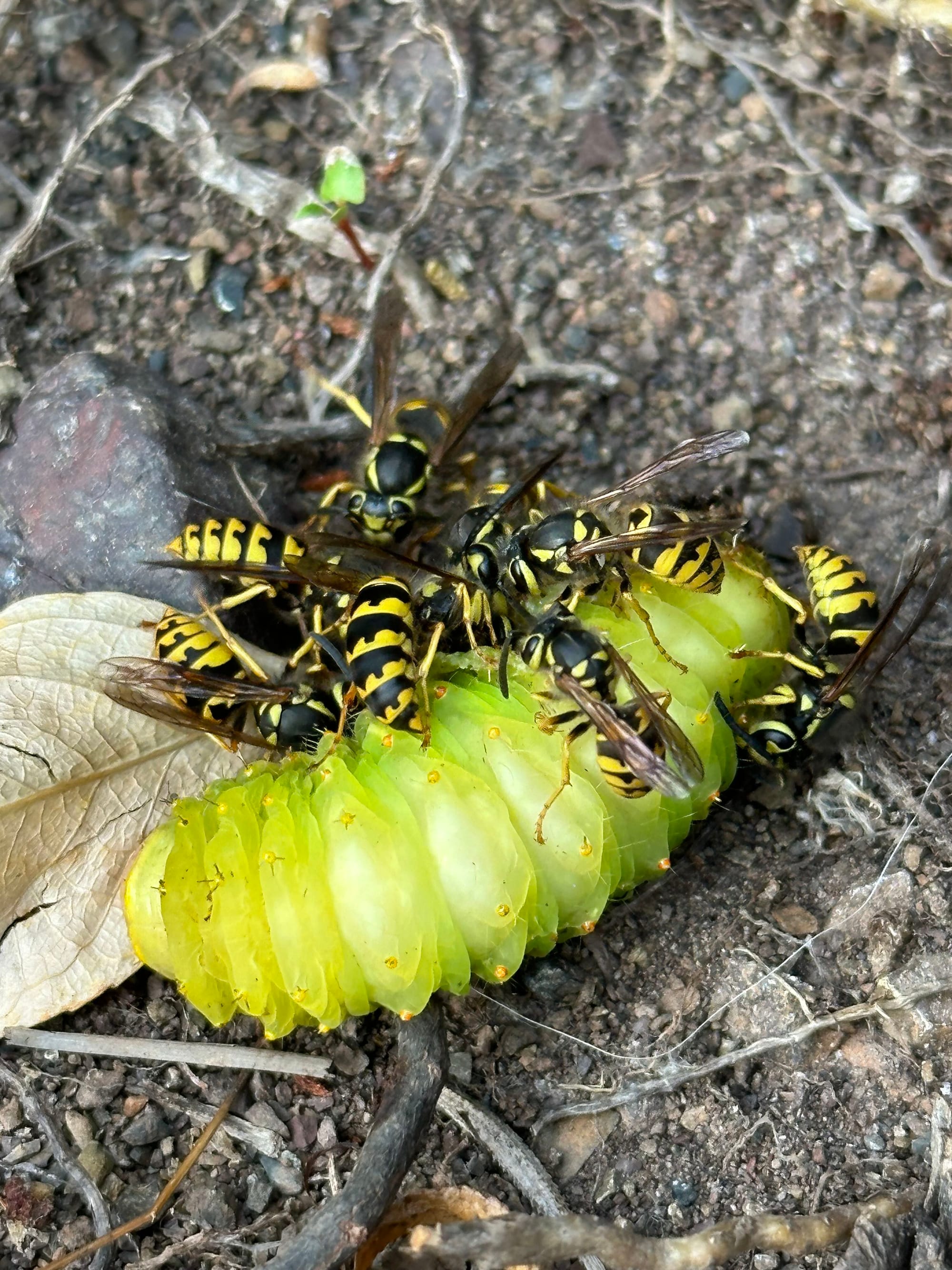
Observation of the Week: Why Summer Yellow?
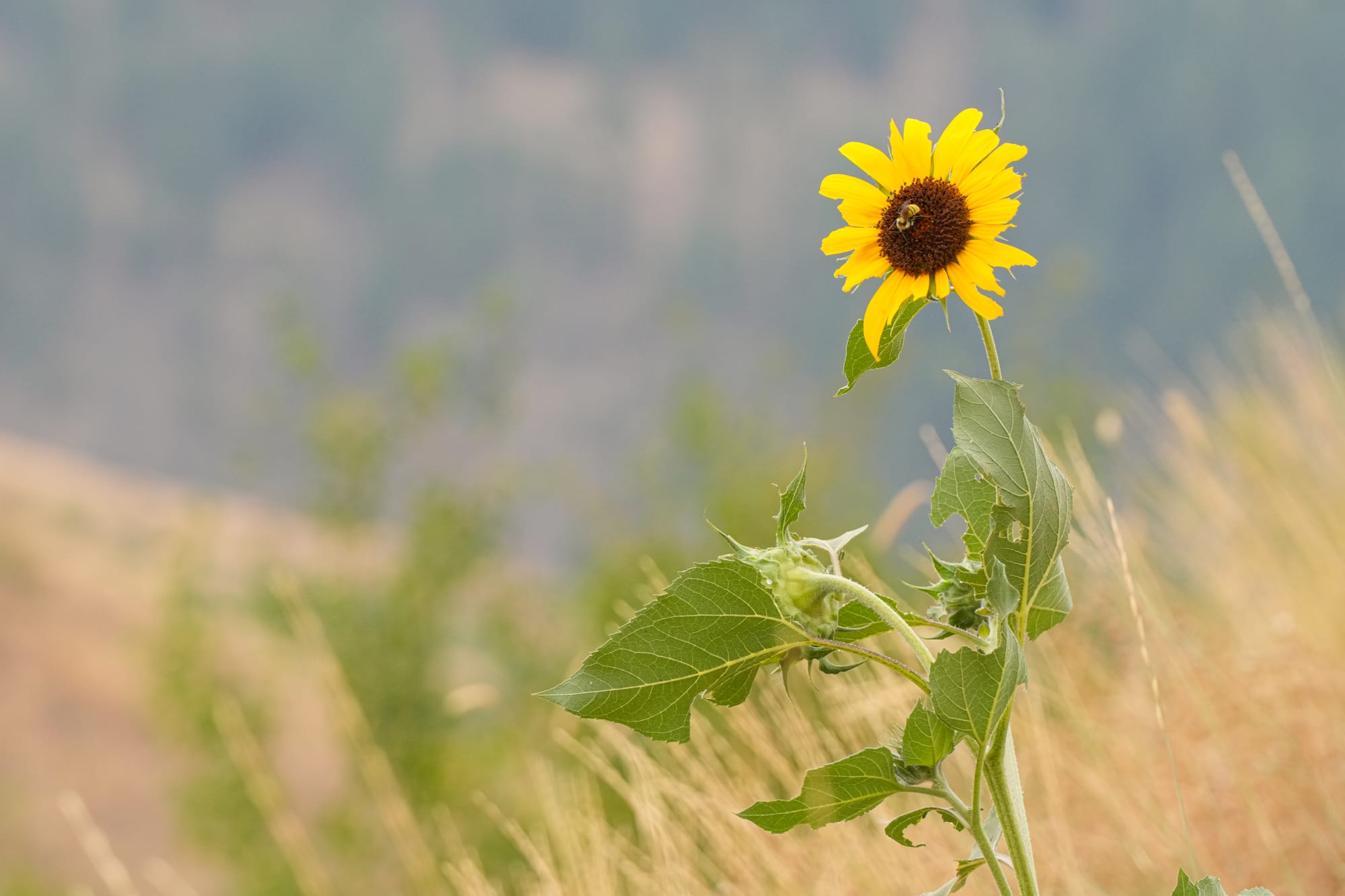
You may have noticed this before, but many of our late summer wildflowers are yellow. Not every flower is yellow of course—you can still find some purple fireweed flowers and a few white flowers on elderberry bushes—but yellow is the dominant color of late summer flowers.
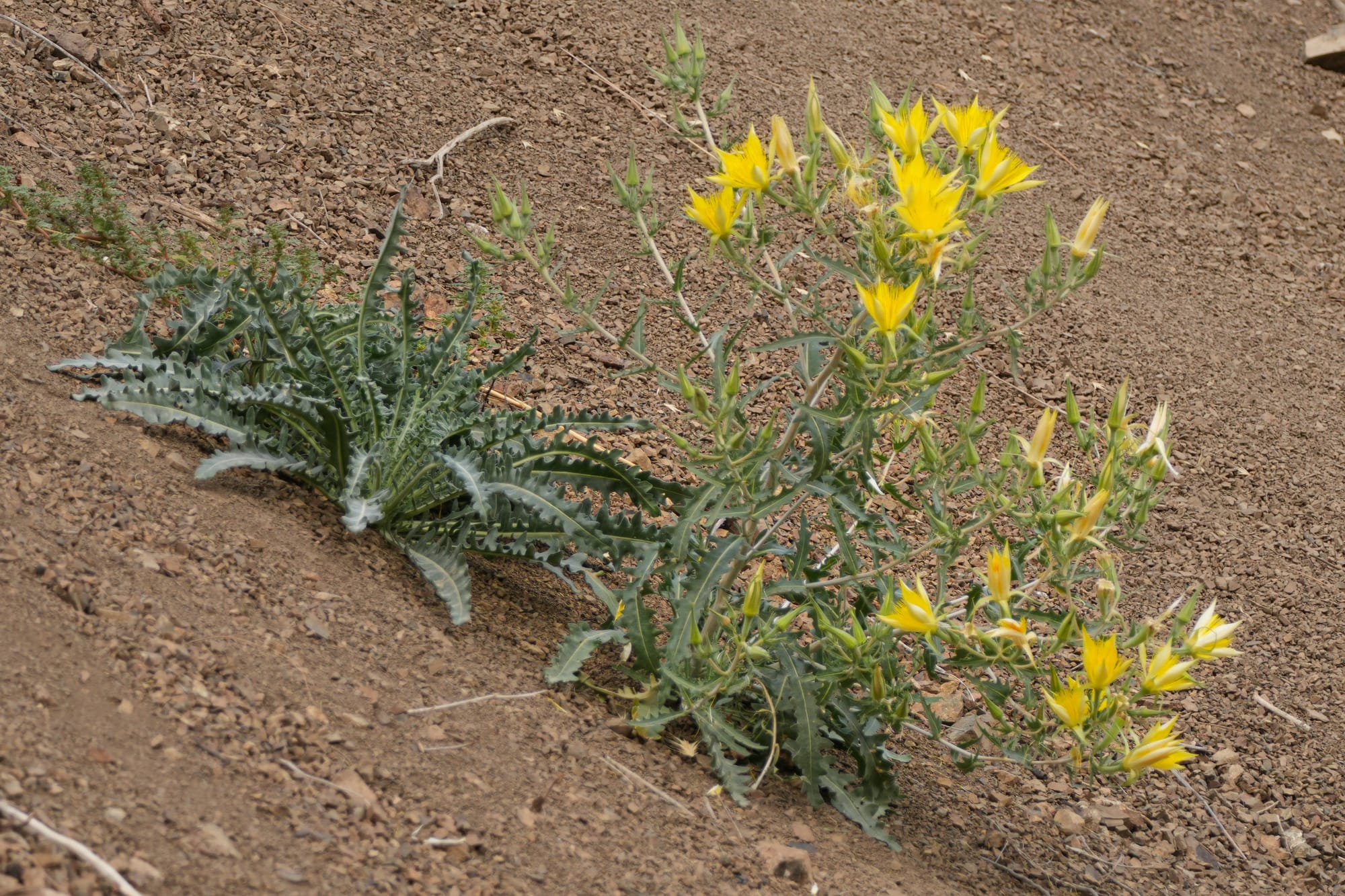
There are likely several reasons for this, but one reason might be that many of our late summer flowers are all members of the same family, the aster or sunflower flower.
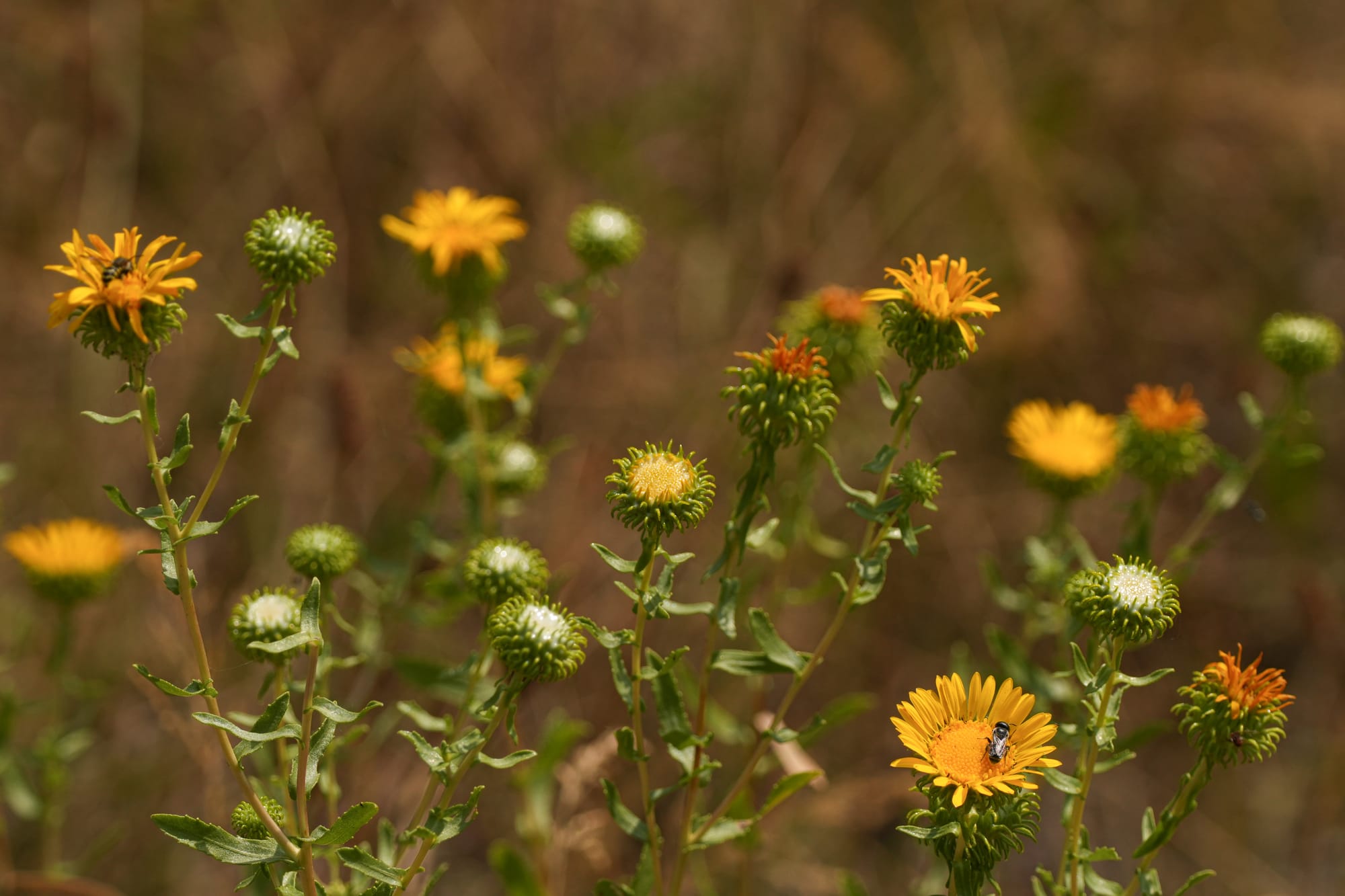
You might also notice that most of these yellow flowers are found in open and grassy areas, where yellow flowers in the full sun are easily spotted. But growing among tall grasses can be a tough choice, so these species spend the summer putting their energy into growing tall, and only after the summer equinox, as days begin to shorten, will they begin forming flower buds that then open in late summer.
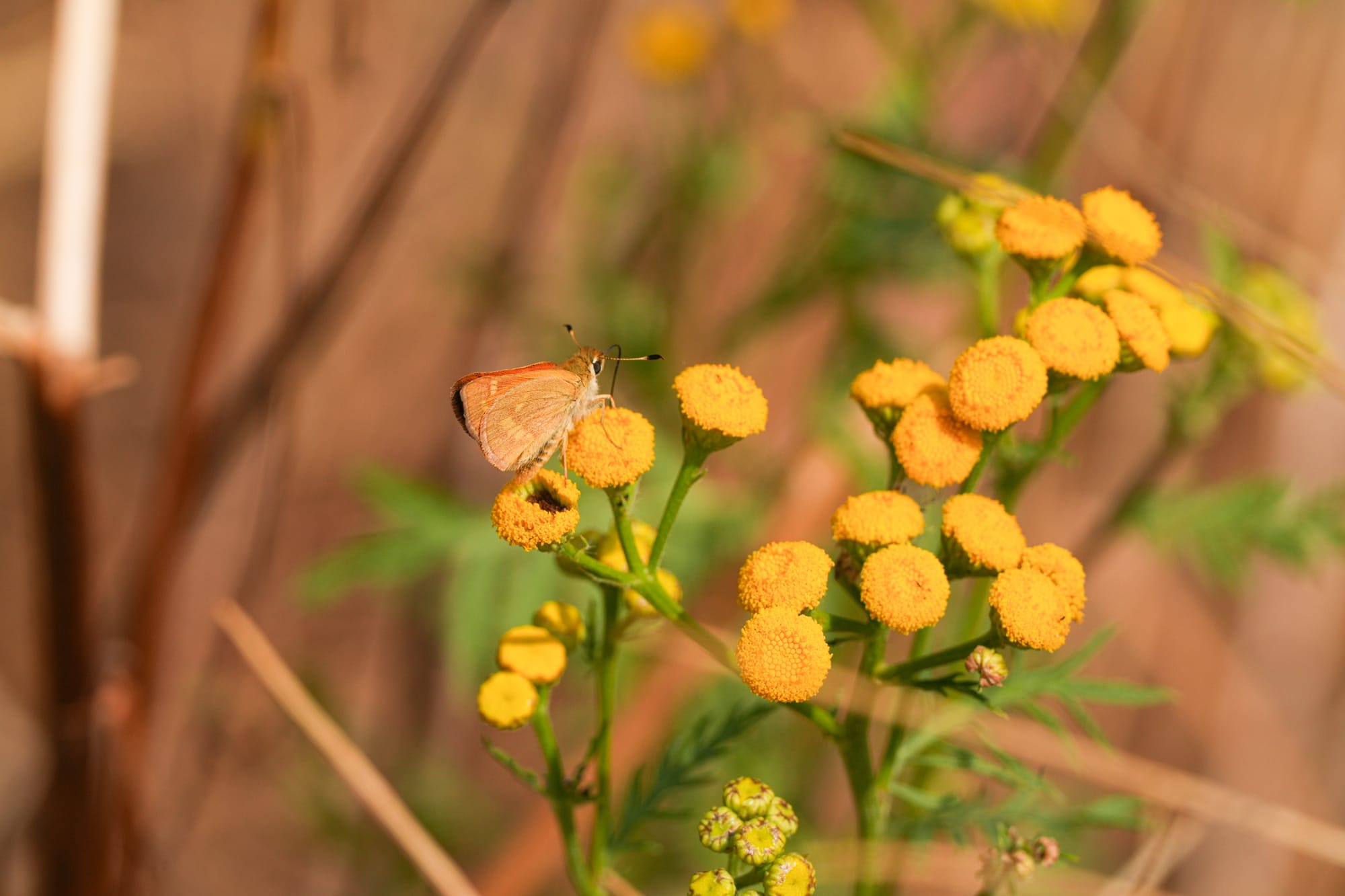
It's worth noting that yellow is a generalist color in flowers, which means that it's the color most easily seen by a wide range of pollinating insects (in fact most plants have yellow pollen so it can be easily found and collected). This trait is further amplified because flowers in the aster family are generalist flowers that can be visited by any and all types of pollinating insects.
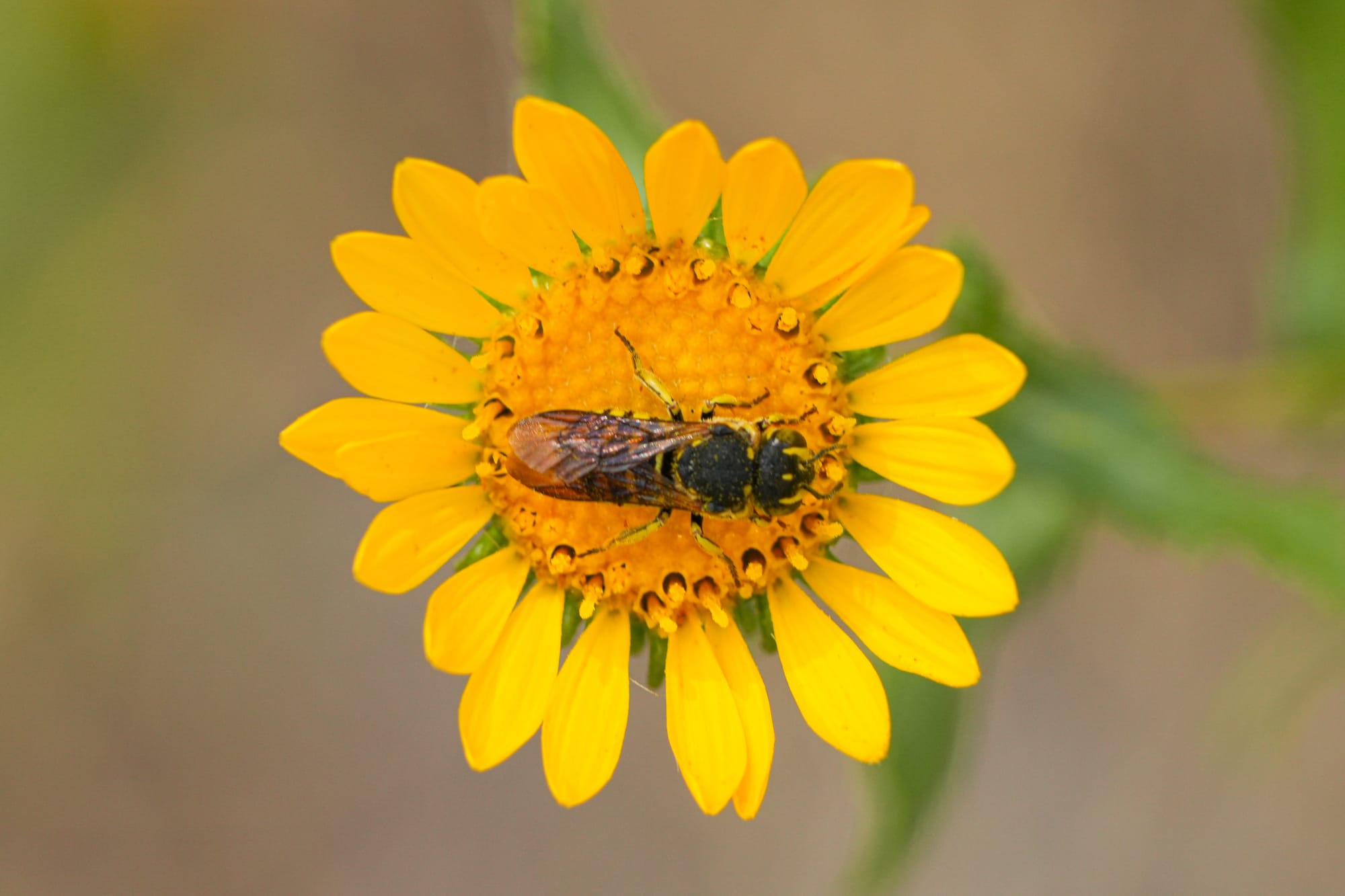
Producing flowers in dry open areas in late summer might be costly because there is so little water available, but these plants tend to be drought tolerant and efficient in their use of water, which grants these flowers exclusive access to late summer insects.

